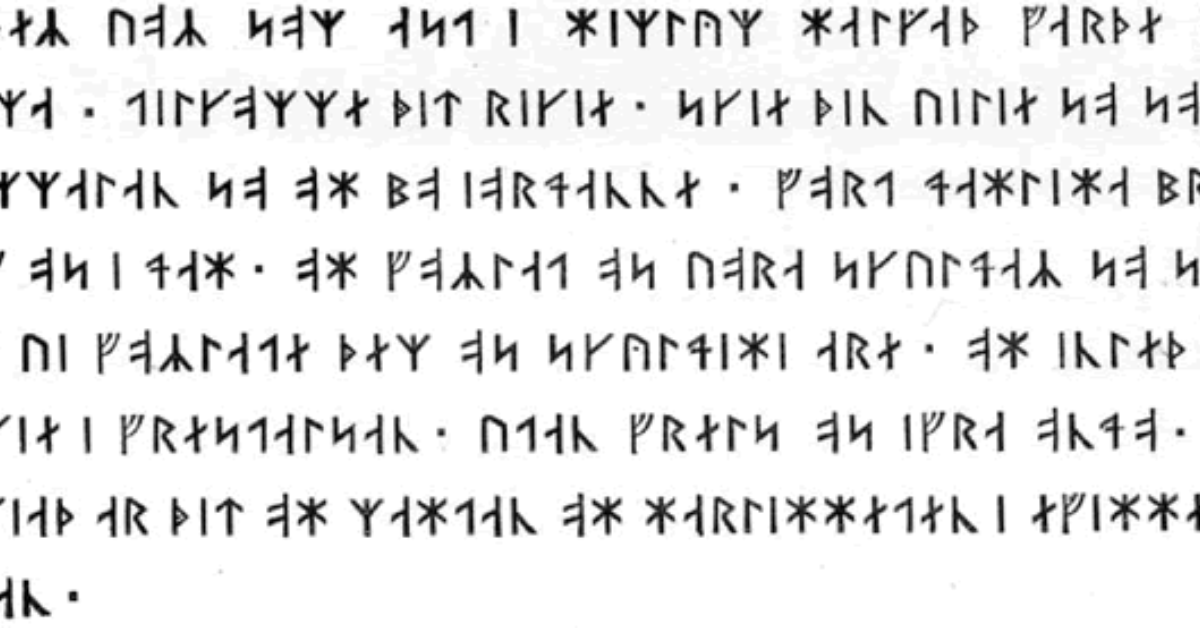The resurgence of interest in ancient languages has led to an increased demand for Old Norse translators, particularly those that offer audio capabilities. This demand is driven by both history enthusiasts and language learners who seek to immerse themselves in the Viking Age by hearing and speaking the language as authentically as possible. While Old Norse, the language of the Vikings, has been extinct for centuries, technology has made it possible to not only translate text but also to hear and learn the language’s unique sounds.
Below, we explore some of the top resources and tips for finding a reliable Old Norse translator with audio to help you get the most accurate and immersive experience.
Understanding the Basics of Old Norse
Old Norse was the language spoken by the people of Scandinavia, particularly by the Vikings, from around the 8th to the 14th century. It influenced several modern languages, especially Icelandic, which still retains a structure close to Old Norse. Understanding this language helps people connect with ancient Scandinavian culture, mythology, and history. However, because it is a “dead language”—one without any native speakers—authentic pronunciation has been pieced together through linguistic research, making learning Old Norse with an audio component particularly challenging but rewarding.
Why an Old Norse Translator with Audio is Beneficial
Audio support in translation tools allows users to hear Old Norse pronunciation, which is invaluable for proper learning. Here are some advantages:
- Accurate Pronunciation: Old Norse has unique sounds not commonly found in modern English. Hearing these sounds can help you understand subtle pronunciation nuances.
- Learning and Retention: Hearing and repeating words aids in better retention compared to text-only learning.
- Enhanced Experience: Hearing the language makes ancient texts and Norse sagas feel more authentic and brings them to life.
Best Old Norse Translators with Audio
Currently, there are limited resources that can provide a full Old Norse translator with audio, but several excellent options exist to help bridge the gap. Here are some top resources that either provide audio directly or aid in the translation and pronunciation of Old Norse.
1. Old Norse Online by Linguistics Research Center (University of Texas at Austin)
This resource, developed by linguistics experts, offers comprehensive lessons on Old Norse, including some audio clips that showcase proper pronunciation. Though it does not have a built-in translator, the site is a valuable resource for learning words and phrases directly from Old Norse texts, helping learners develop an ear for the language’s phonetics.
Pros:
- Expertly developed lessons
- Accurate audio pronunciations for specific terms
Cons:
- Limited to specific examples; no real-time translation
2. Google Translate and Other Modern Translators
While Google Translate does not support Old Norse, it supports Icelandic, which can sometimes serve as a rough substitute due to the languages’ similarities. However, users should be cautious as it’s not a perfect translation and lacks audio for Old Norse specifically. Nevertheless, by listening to Icelandic pronunciation, learners can approximate the sounds of Old Norse.
Pros:
- Free and easy access
- Decent approximation for certain terms
Cons:
- Lacks true Old Norse support
- Limited accuracy
3. Icelandic Pronunciation Tools
Since Icelandic retains many Old Norse features, using Icelandic pronunciation tools can help learners get close to authentic Old Norse sounds. Websites like Forvo, a community-driven pronunciation dictionary, often have Icelandic entries that may approximate Old Norse sounds, although they do not specifically translate Old Norse text.
Pros:
- Extensive Icelandic pronunciations available
- Great for hearing similar sounds
Cons:
- Limited to Icelandic language entries
- Not specific to Old Norse
4. YouTube Channels and Old Norse Enthusiasts
Several linguists and history enthusiasts on platforms like YouTube provide pronunciation guides and translations for Old Norse texts. Channels dedicated to Old Norse often include spoken recitations of historical texts or vocabulary breakdowns with pronunciation tips. This user-driven content helps learners familiarize themselves with the language through listening.
Pros:
- Wide range of vocabulary and phrase videos
- Accessible and free
Cons:
- Varied accuracy depending on the creator
- Not real-time translation
How to Use Old Norse Translators Effectively
- Combine Text and Audio: Where possible, use text-based translators alongside audio pronunciation guides to better understand how written words sound.
- Learn Phonetic Patterns: Old Norse has specific phonetic patterns. Familiarizing yourself with these can help when using Icelandic tools as an alternative.
- Practice Pronunciation Regularly: Since Old Norse is an extinct language, developing a “natural” accent takes practice. Repeating words aloud after listening to audio will help improve your fluency.
The Future of Old Norse Translators with Audio
With growing interest in ancient languages and advancements in AI, it’s likely we’ll see more sophisticated Old Norse translators with audio in the coming years. AI-powered language models have already made strides in translating and generating audio for ancient languages, and similar innovations for Old Norse would transform language learning by making it more accessible and interactive.
